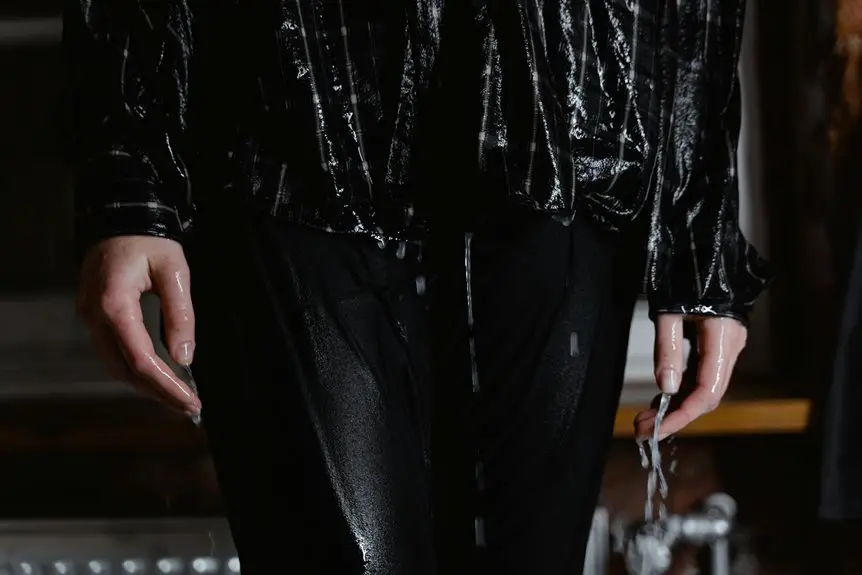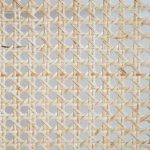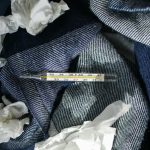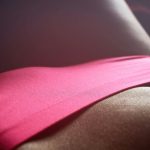Yes, lyocell is moisture-wicking and does a great job pulling sweat away from your skin to keep you dry and comfortable. It absorbs moisture faster and dries quicker than cotton, while offering better breathability and softness than polyester. Compared to bamboo, lyocell typically dries faster and manages moisture slightly better, making it ideal for activewear. If you want to understand how these differences impact your comfort and fabric choice, there’s more to discover.
Table of Contents
Key Takeaways
- Lyocell efficiently wicks moisture by absorbing sweat and spreading it across the fabric for quick evaporation, keeping wearers dry and comfortable.
- Compared to cotton, lyocell absorbs moisture faster and dries quicker, preventing the damp, heavy feel cotton often has.
- Lyocell offers superior breathability and softness over polyester, although polyester dries faster but feels less breathable.
- Against bamboo, lyocell absorbs and dries moisture more rapidly, making it better suited for activewear and intense physical activities.
- Lyocell’s moisture-wicking properties, combined with its softness and breathability, provide enhanced comfort and odor control during workouts.
Understanding Moisture-Wicking: What It Means for Fabrics
Although moisture-wicking might sound technical, it simply means a fabric’s ability to pull sweat away from your skin and let it evaporate quickly.
Moisture-wicking means fabric that draws sweat away from your skin to help it dry faster.
When you wear moisture-wicking clothes, they keep you feeling dry and comfortable, especially during workouts or hot weather. This works because the fabric moves moisture from where it’s trapped on your skin to the surface of the material, where it can evaporate faster.
You’ll notice that moisture-wicking fabrics don’t cling to your body like cotton often does when wet. Instead, they help regulate your body temperature by managing sweat effectively.
Understanding this helps you choose the right fabric for activities where staying dry matters, improving comfort and performance without needing constant clothing changes.
The Moisture-Wicking Properties of Lyocell
Now that you know how moisture-wicking fabrics work, let’s look at how lyocell performs in this area.
Lyocell stands out because it naturally absorbs moisture and moves it away from your skin efficiently. This fiber’s smooth surface allows sweat to spread quickly, helping it evaporate faster and keeping you dry.
Unlike some synthetic fibers, lyocell feels soft and breathable, so you won’t get that sticky sensation during intense activity. Its moisture management isn’t just about absorption; it also prevents moisture buildup, reducing the risk of irritation or odor.
Comparing Lyocell to Cotton in Moisture Management
When you compare lyocell to cotton, you’ll notice lyocell absorbs moisture faster, pulling sweat away from your skin more efficiently.
Cotton soaks up moisture too, but it tends to hold onto it longer, making it feel damp.
You’ll also find lyocell dries much quicker, keeping you comfortable during active or humid conditions.
Absorption Rate Differences
Because lyocell fibers have a unique structure that enhances moisture absorption, you’ll notice they wick moisture faster than cotton.
Lyocell’s smooth, porous fibers pull moisture away from your skin quickly, distributing it across the fabric’s surface. This rapid absorption helps keep you feeling dry and comfortable.
In contrast, cotton fibers absorb moisture more slowly; they trap sweat rather than move it efficiently. When you wear cotton, moisture can linger against your skin longer, which might feel damp or heavy.
Drying Speed Comparison
Lyocell’s quick moisture absorption sets the stage for its impressive drying speed. When you wear lyocell, moisture spreads across the fabric’s surface, allowing it to evaporate faster than cotton.
Cotton tends to hold water within its fibers, making it slower to dry and sometimes leaving you feeling damp longer. If you’re active or live in humid climates, lyocell’s ability to dry swiftly keeps you comfortable by reducing that sticky, wet feeling.
Plus, lyocell’s smooth fibers help air circulate better, speeding up drying even more. While cotton is breathable, its slower drying time can be a drawback for moisture management.
How Lyocell Stacks Up Against Polyester
When you compare lyocell to polyester, you’ll notice differences in breathability and moisture absorption that affect comfort.
Lyocell tends to absorb moisture better, while polyester excels in durability.
Let’s explore how these factors impact your daily wear.
Breathability Comparison
Although both Lyocell and polyester are popular in activewear, you’ll find that Lyocell offers superior breathability.
Its natural cellulose fibers allow air to circulate more freely, helping you stay cooler during workouts. Polyester, being synthetic, tends to trap heat and restrict airflow, which can leave you feeling warmer and less comfortable.
When you wear Lyocell, moisture evaporates faster due to this enhanced airflow, reducing that sticky, clammy feeling.
Polyester fabrics often rely on engineered ventilation zones to compensate for their lower breathability, but they rarely match the natural airflow of Lyocell.
Moisture Absorption Rates
Moisture absorption plays an essential role in how comfortable your activewear feels during intense exercise.
Lyocell excels here because it can absorb up to 50% more moisture than cotton, making it highly effective at pulling sweat away from your skin.
Compared to polyester, Lyocell absorbs moisture rather than just wicking it, which impacts how each fabric feels and performs.
Here’s how they compare:
- Lyocell absorbs moisture into its fibers, keeping sweat away from your skin but potentially feeling damp longer.
- Polyester repels water and moves moisture to the surface, drying faster but sometimes feeling less breathable.
- Your choice depends on whether you prefer moisture absorption or quick-drying properties during workouts.
Durability and Comfort
Understanding how Lyocell manages moisture gives you a good foundation for evaluating its durability and comfort compared to polyester.
Lyocell feels softer and more breathable against your skin, making it ideal for sensitive skin or warm weather. It naturally resists wrinkles and maintains its shape well, so you’ll find it comfortable throughout the day.
However, Lyocell isn’t as tough as polyester; it can weaken when wet and may wear out faster with frequent washing.
Polyester, on the other hand, offers superior durability and resists abrasions, making it great for activewear or heavy use. But it can feel less breathable and sometimes traps heat.
Ultimately, if comfort is your priority, Lyocell excels, but for long-lasting toughness, polyester takes the lead.
Bamboo vs. Lyocell: Which Fabric Handles Moisture Better?
How well do bamboo and lyocell fabrics manage moisture when you’re wearing them? Both are known for their moisture-wicking abilities, but lyocell often edges out bamboo slightly.
Here’s why you might prefer one over the other:
- Absorption Rate: Lyocell absorbs moisture faster, pulling sweat away from your skin quickly, which helps you stay dry and comfortable.
- Drying Speed: Bamboo tends to hold moisture a bit longer, so lyocell usually dries faster, making it ideal for active wear.
- Breathability: While both fabrics breathe well, lyocell’s smoother fibers allow air to circulate more effectively, enhancing moisture evaporation.
The Role of Fabric Structure in Moisture Control
Because fabric structure directly influences how liquids move through fibers, it plays an essential role in moisture control.
When you choose a fabric like lyocell, its smooth, round fibers create a dense yet breathable structure that efficiently pulls moisture away from your skin. This capillary action helps sweat evaporate faster, keeping you dry and comfortable.
In contrast, loosely woven fabrics might trap moisture, making you feel clammy. The weave or knit also matters; tighter weaves slow moisture movement, while open knits promote airflow and quicker drying.
Choosing the Best Fabric for Activewear and Everyday Comfort
Fabric structure sets the stage, but choosing the right material for activewear and everyday comfort involves balancing moisture management with durability, softness, and breathability.
Choosing the right fabric balances moisture control, durability, softness, and breathability for active and everyday wear.
You want fabrics that keep sweat away while feeling good against your skin and lasting through wear and washing. Here’s what to take into account:
- Moisture-Wicking Efficiency: Look for fabrics like lyocell or polyester blends that pull moisture away quickly, keeping you dry during workouts or daily activities.
- Softness and Comfort: Natural fibers like lyocell offer softness and breathability, preventing irritation during extended wear.
- Durability: Synthetic blends often resist wear and maintain shape, ideal if you need activewear that stands up to frequent use.
Balancing these factors guarantees you pick fabrics that work well both in the gym and for casual comfort.
Frequently Asked Questions
Is Lyocell Environmentally Sustainable in Its Production Process?
You won’t find a fabric friendlier to Earth than lyocell! You’ll love knowing it’s made with a closed-loop process that recycles water and solvents, cutting pollution and saving resources compared to many others.
How Durable Is Lyocell Compared to Other Fabrics?
You’ll find lyocell fairly durable—it resists wrinkles and holds up well to washing. While not as tough as cotton or polyester, it’s stronger than rayon, making it a good balance between comfort and longevity.
Can Lyocell Fabric Cause Allergies or Skin Irritation?
You probably won’t experience allergies or skin irritation from lyocell since it’s hypoallergenic and gentle. However, if you have sensitive skin, always test a small patch first to avoid any unexpected reactions.
How Should Lyocell Clothing Be Properly Washed and Cared For?
You should wash lyocell clothing in cold water on a gentle cycle and avoid bleach. Hang dry or use a low heat setting in the dryer to prevent shrinking and maintain its softness and durability.
What Types of Clothing Commonly Use Lyocell Fabric?
You’ll often find lyocell in wardrobe essentials like soft shirts, flowing dresses, and comfy activewear. Its gentle touch and breathability make it a go-to for those who appreciate both comfort and style in everyday wear.
- Do 100% Cotton Percale Sheets Pill? How to Prevent It - July 15, 2025
- Can You Bleach Cotton Percale? Safe Whitening Practices - July 15, 2025
- Are SKY Sheets Percale? A Product Analysis - July 15, 2025







